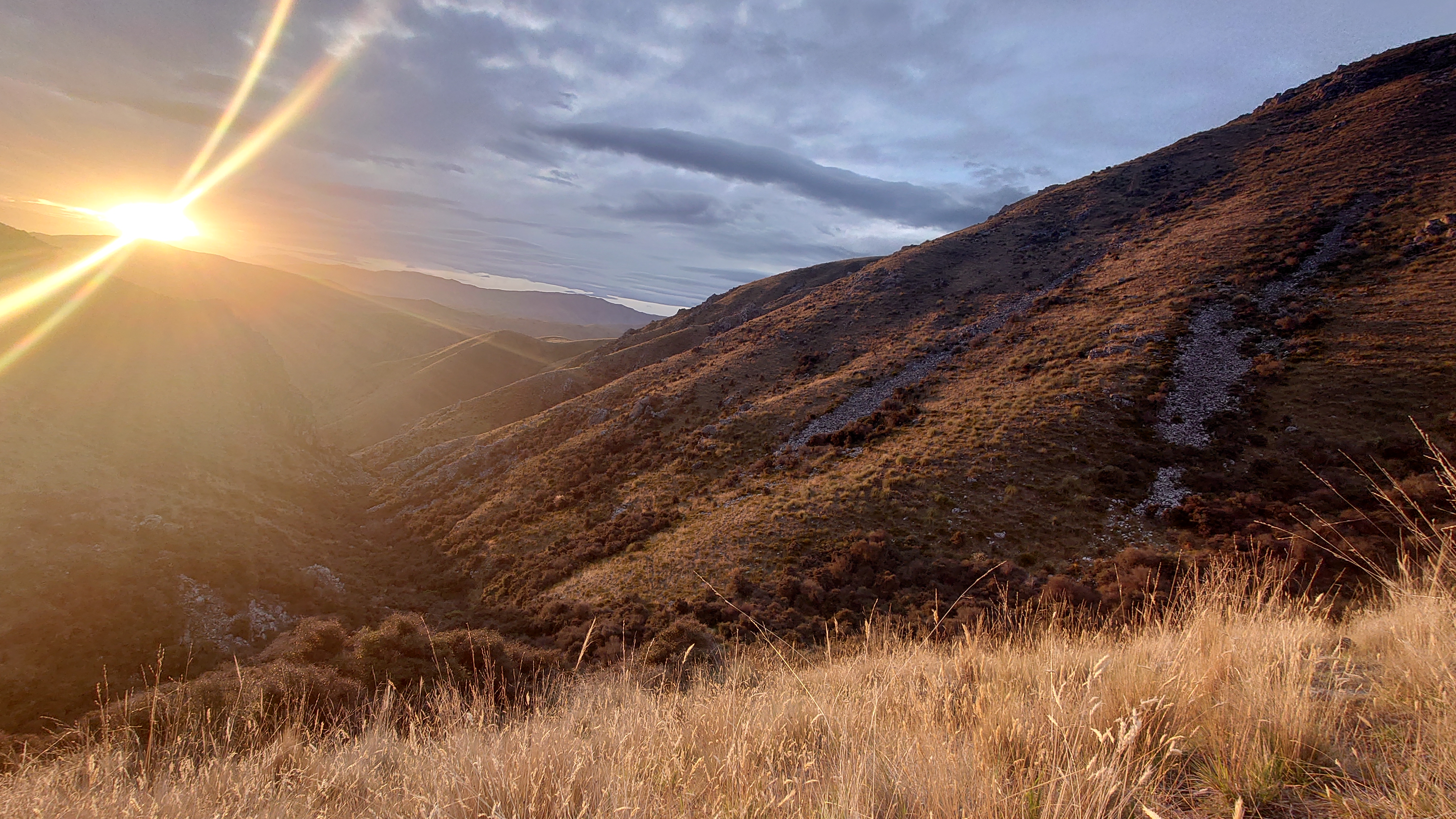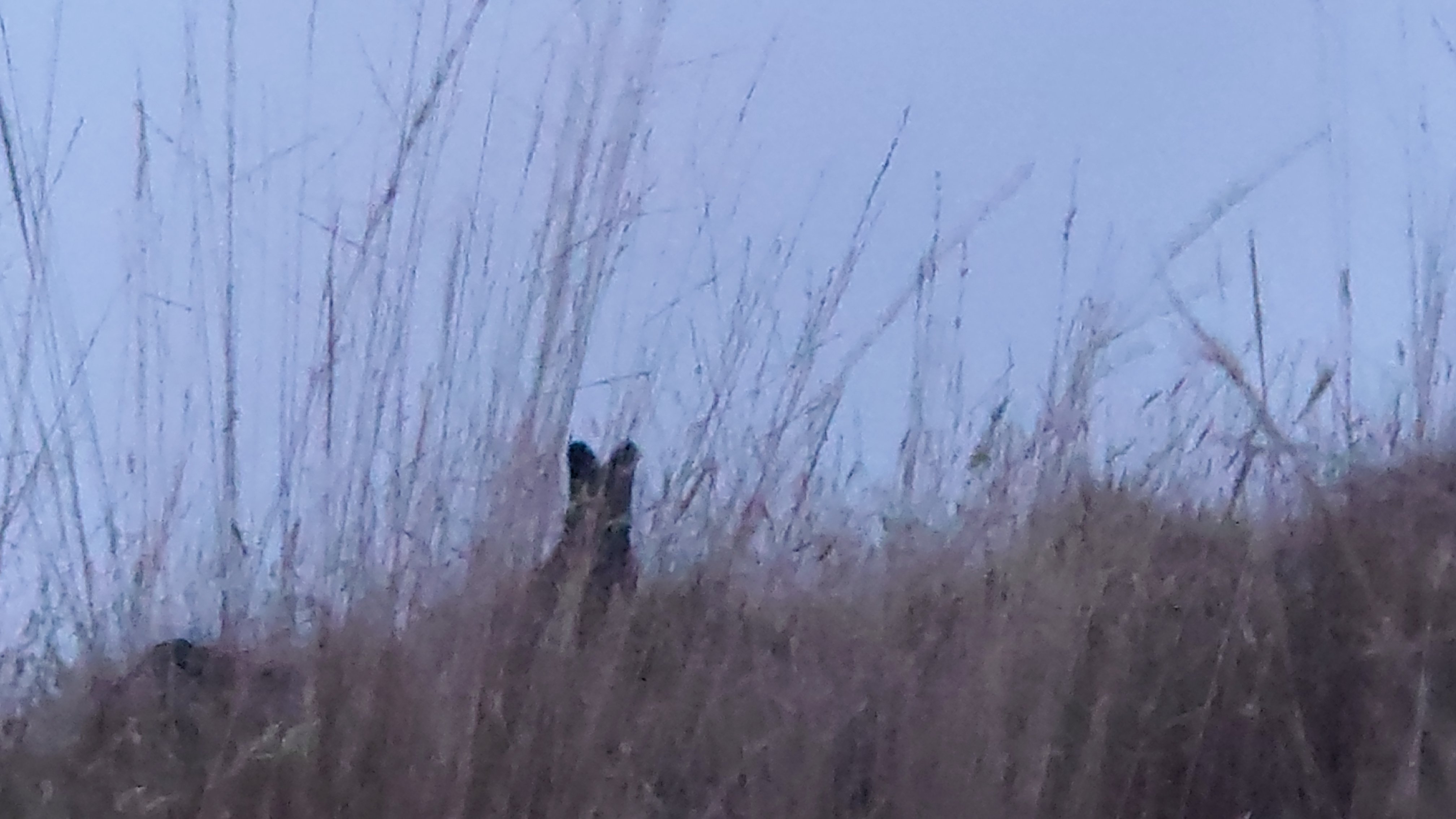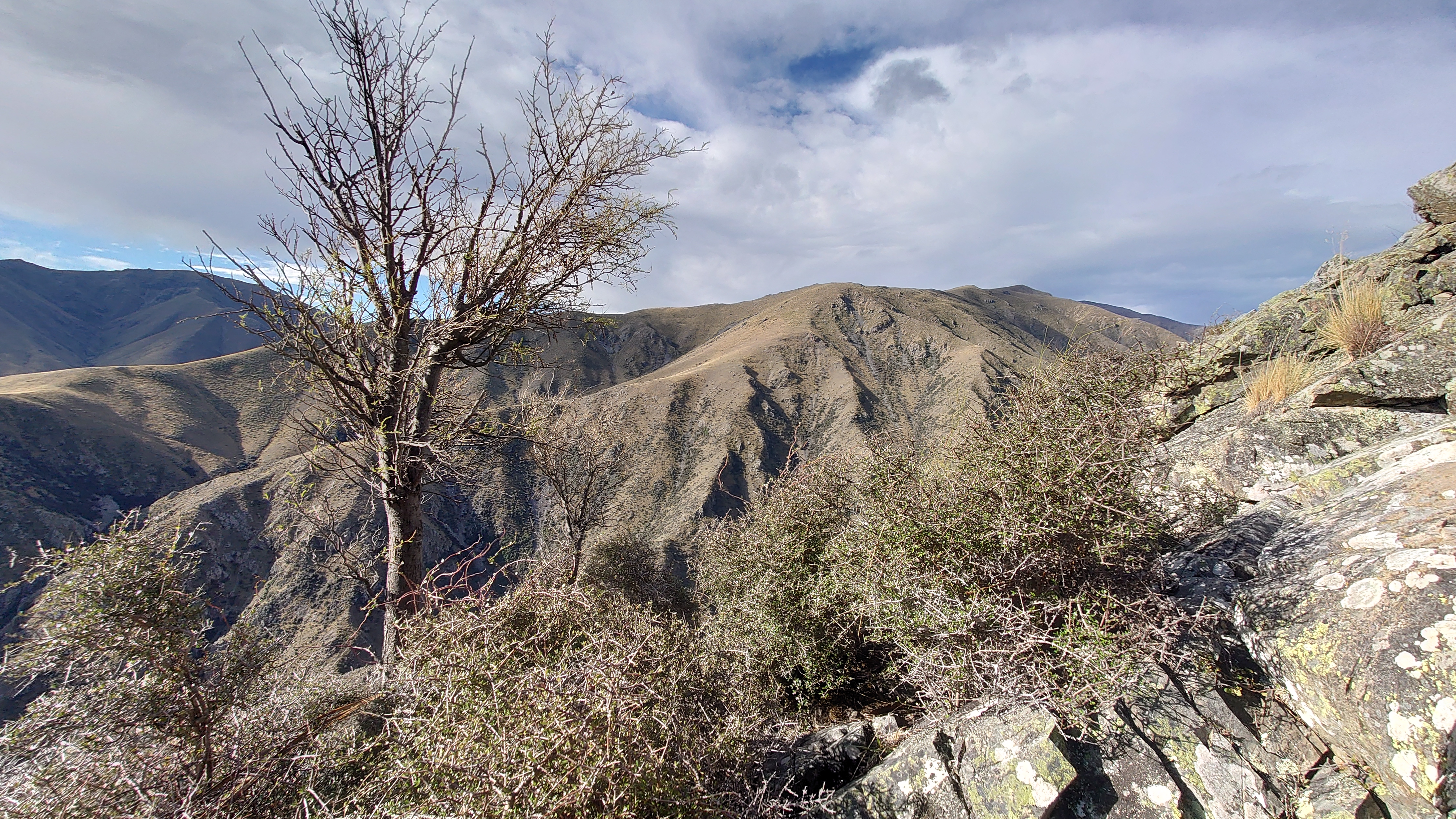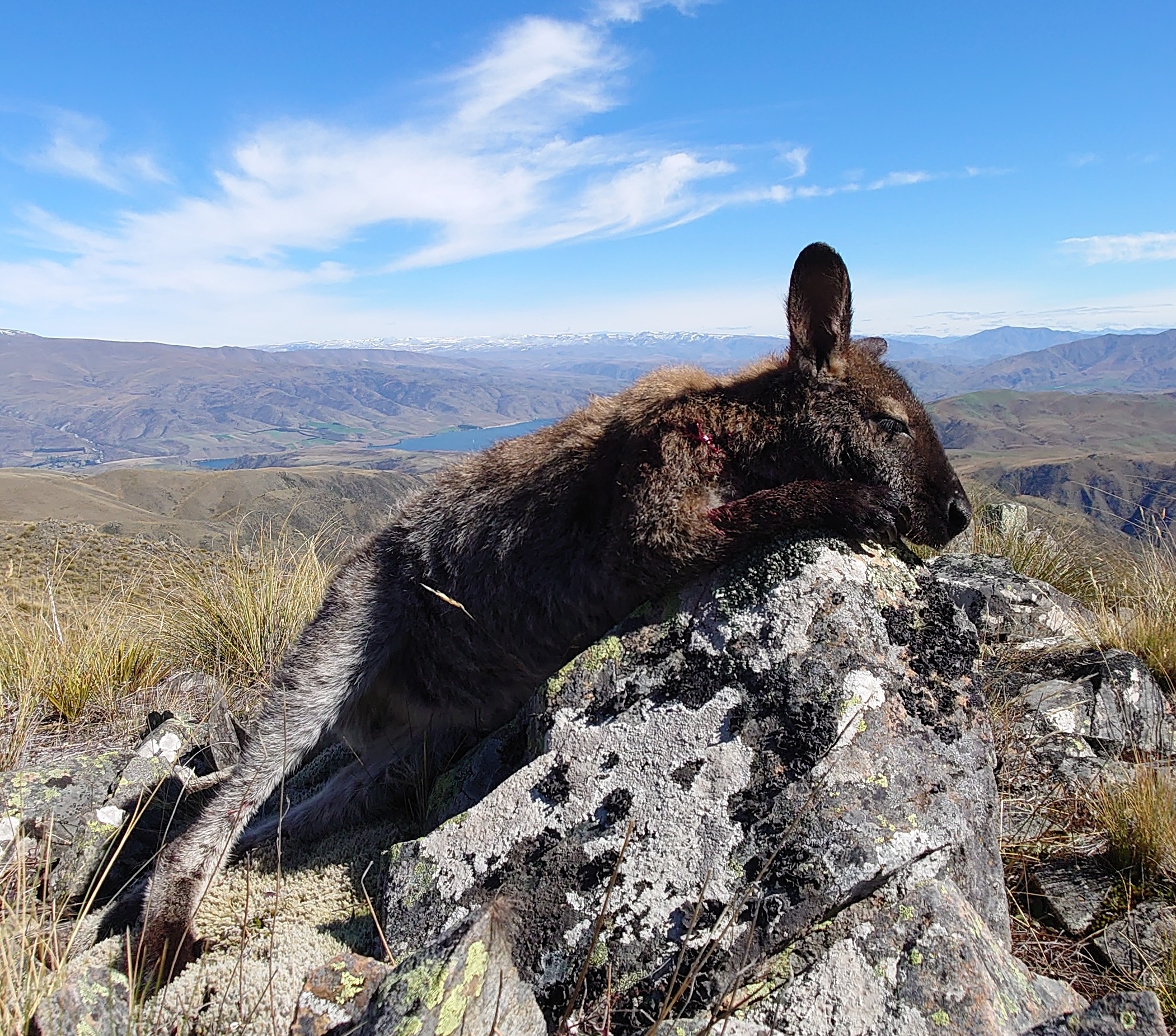sorry for the bad english.. its translated by a webtool...
A short-shot wallaby and the chamois like tahr
When the nightmare of a New Zealand chamois hunt turns into something very special after all.
It just won't work out with my New Zealand chamois. Eleven days of high mountain hunting in the central Southern Alps of New Zealand and not a chamois in sight. And now this. On the west coast of the South Island, New Zealand's chamois hotspot, I'm stuck in the narrow valley of the Perth River in the Nolans Hut. The rain of the past few days makes river crossings impossible and I can't climb up to the summit regions on my side. Hunting is therefore limited to the river banks near the hut. Supposedly there are chamois here, at least that's what the man from the heli-service assured me. But somehow hunting chamois on the valley floor doesn't fit in with my world view. What's more, the Ministry of Nature Conservation spread poison here last year to eradicate "invasive neozoa", including red deer and chamois. So after just one night in the hut, I abandon the "West Coast chamois" venture and struggle the 12 km on foot back to the car. As magnificent as the landscape is, it takes its toll, especially as I am loaded down with a good 30 kg of equipment. The helicopter covers the distance in just over 3 minutes on the outward journey, while the return journey on foot takes a good seven adventurous and exhausting hours.
Back from the wilderness, a new plan is needed, the chamois has not been put aside. So I explore the possibilities, go through the hunting areas on the website of the Ministry of Nature Conservation and study my "Spot X", a book with tips on hunting areas. After a good half hour, I decide on the Kirklistons, a low mountain range in the south of the Canterbury region, because Spot X confirms a good chamois population here and also lots of wallabies. A good six hours' drive later, I have circumnavigated the New Zealand Alps in the south and arrive in Kurow, the gateway to the Kirklistons, at dawn. Once again it's time to pack my rucksack and set off, another 12 km, again with 30 kg of luggage. In late summer temperatures of 25°C, the 900 meters in altitude are quite exhausting. Nevertheless, after a good 45 minutes I stumble across a wallaby, albeit a dead one. It's hard to say what killed it: poison or bullet. The find is of course motivating, but after a good 9 km I'm physically exhausted and running out of breath. Diana is probably watching and sees what a tragically miserable figure I cut. She motivates me again by letting a wallaby emerge from the grass next to the path. However, my weapon is still in transport mode, strapped tightly to my rucksack. Cursing on my part, I hop away on the side of the little kangaroo. But there is one consequence: I get the gun ready, mount the silencer and scope. After 400 m, the scene is repeated with another wallaby. My New Zealand preparation included >350 m shots, but for this wallaby situation it would have made sense to test a shot at 5 m. Such a short-shot distance has its own pitfalls. Nevertheless, the bullet hits the mark, the wallaby becomes prey at the shortest distance and ends up in my bag. My first hunting success gives me new hope for chamois and I head for the Pearsons Hut, a hut with 4 beds, which will be my accommodation for the next few days. Once I arrive, I head for the bushes. However, the silence of the place is disturbed by the engine noise of two Quats. So I won't be hunting here alone for the next few days, which is a bit unfortunate on the one hand, but on the other it's a chance to have some nice conversations with other wilderness hunters. Staying positive. The two boys hunt here more often and are now hoping for an early red deer rut at the end of March. Both have already been able to bag chamois here; on average one per 20 hunting days. Disillusionment. But now I'm here and now I'm staying. What the hell! Stay positive! Enjoy the weather, landscape and hunting! And maybe I'll get a red deer.
So let's get ready for some happy hunting. In New Zealand's open hunting areas run by the Nature Conservancy, hunting means covering a lot of ground, classic spot & stalk. So over the next few days, I keep looking for easily accessible vantage points to meticulously search the area from. I spot plenty of wallabies; quite cute companions with a bad reputation among the farmers. Competition for (sheep) food leads to intensive reduction efforts. In March 2017, more than 1,200 wallabies were shot from helicopters over an area of over 5,000 hectares. Now that I've stretched one, I'm personally no longer quite so ambitious. Because the danger of shooting a female with a young in her pouch takes away my enthusiasm. Now that I've stretched one, I'm personally no longer quite so ambitious. Because the danger of shooting a female with a young animal in her pouch takes away my enthusiasm. Fortunately, my wallaby was a male. The hunt during the first few days is business as usual in terms of chamois: none to be seen far and wide. I later learn from a ranger that the area's good reputation dates back to a time when the land was still in private hands. With the transfer to the nature conservation administration, the hunting regime changed and with it the game densities. In the meantime, chamois only occur as rare game in the areas bordering the neighboring farm. Insider information that cannot be found online or in Spot X. At least there is some excitement, it "rocks". In the European Alps, this is an unmistakable sign of chamois moving through loose scree - but in the here and now it is three Merino sheep belonging to the neighboring farm. To avoid trouble, I keep my finger straight. Even though I could make good use of the meat and it would have been legal to kill them. So I still have to kill a wallaby for my own supply. At least I can now tell quite reliably what is a young animal and what is not. In a craggy corner where 3 canyons meet, I had always had a good view of wallabies the days before. So I'm drawn there again. I soon find a spot with a far-reaching view from where I scan the slopes. As usual, I spot nothing but wallabies - why should it be any different? But they are all too far away. However, I don't make any effort to stalk one of them, but stay put. Given the population density, one is bound to appear within shooting distance. Meanwhile, it's getting late in the afternoon, the first shadows are falling on the southern slopes and the colors of the landscape are changing. Slowly but surely, my eyes and senses get used to it. I scan the areas around me again, everything as usual. No game to be seen. But oops, what's that dark brown rock? It wasn't there a moment ago! Is that a play of colors in the light of the setting sun? A phantom chamois? Like our phantom deer at home that come out at dusk? No, the phantom is actually moving! But somehow I can't figure it out. It's not a chamois, too dark; not a deer either, too shaggy, too brown, too small. I'd say it's a tahr, which is very unlikely, because they're not supposed to exist here. But indeed, it is a tahr, a bull at that, and not a young one.
The fact that I come across a tahr here in the Kirklistons is truly astonishing, as the first populations can be found a good 40 km to the northwest near Lake Ohau. Speculation on my part: The 19,000 ha sheep farm adjacent to the state land is known for trophy hunting of red deer and chamois. Why wouldn't a tahr population have established itself there by now? Anyway, now I have to think about how to get hold of the tahr. And whether I want to stretch it at all. According to the rangefinder, the distance is only 213 m and is easily doable, but the tahr is in a steep valley, a good 120 meters below me in the middle of the thorn bush. One thing is clear, recovering the probably 100 kg piece is not going to be much fun, especially as I am alone. I can't expect any help from my new friends, they both left (unsuccessfully) in the morning. If the worst comes to the worst, it will be a solo rescue, which will take a lot of energy and not be without danger. However, I have some time to make a decision, as the tahr is still quietly branching out in the shade under the rock. Although I'm still undecided, I set up my weapon and take a "trial sight". And then it's like "No! I don't want a new dog, I'll just have a look at the puppies", only to soften and go home with one of the puppies. Something similar happens now when the tahr pulls across under the rock and the reticle stands still on the leaf. The shot breaks, the tahr makes a leap, turns on its own axis, then pulls a good 10 m into the slope, then stumbles, rolls, gets back on its feet and staggers down the slope into the thorn bush and thus out of sight. Now that the stage is empty again, I think to myself "Great, this is going to be exciting and there's a lot of work to do, if I can even find the piece. But who says A, ... The search is successful, albeit a story in itself. In the meantime, the whole situation seems very surreal to me and it's only when the bull is stretched that reality becomes real. And in this case, reality means that in front of me is a 9-year-old mature tahr with a horn length of 13.3 inches, which really is the proverbial needle in a non-existent haystack and makes me forget every chamois.
Welcome guest, is this your first visit? Create Account now to join.
Welcome to the NZ Hunting and Shooting Forums.
Search Forums
User Tag List
Results 1 to 12 of 12
 23Likes
23Likes
Thread: A Christmas 2023 morning to introduce myself
Threaded View
-
25-12-2023, 11:52 AM #9Member

- Join Date
- Oct 2023
- Location
- Germany
- Posts
- 11
Similar Threads
-
Introduce myself
By DanJury in forum IntroductionsReplies: 8Last Post: 24-07-2022, 10:24 PM -
Let me introduce myself
By pestilence in forum IntroductionsReplies: 20Last Post: 01-05-2021, 10:43 AM -
Better introduce myself.
By BMcB in forum IntroductionsReplies: 10Last Post: 11-10-2020, 06:45 PM -
Let me introduce myself :)
By LookingForMauser in forum IntroductionsReplies: 7Last Post: 12-12-2019, 05:21 PM -
Never did introduce myself
By WillB in forum IntroductionsReplies: 4Last Post: 19-06-2016, 08:18 PM
Tags for this Thread
Welcome to NZ Hunting and Shooting Forums! We see you're new here, or arn't logged in. Create an account, and Login for full access including our FREE BUY and SELL section Register NOW!!





 LinkBack URL
LinkBack URL About LinkBacks
About LinkBacks








 Reply With Quote
Reply With Quote


Bookmarks